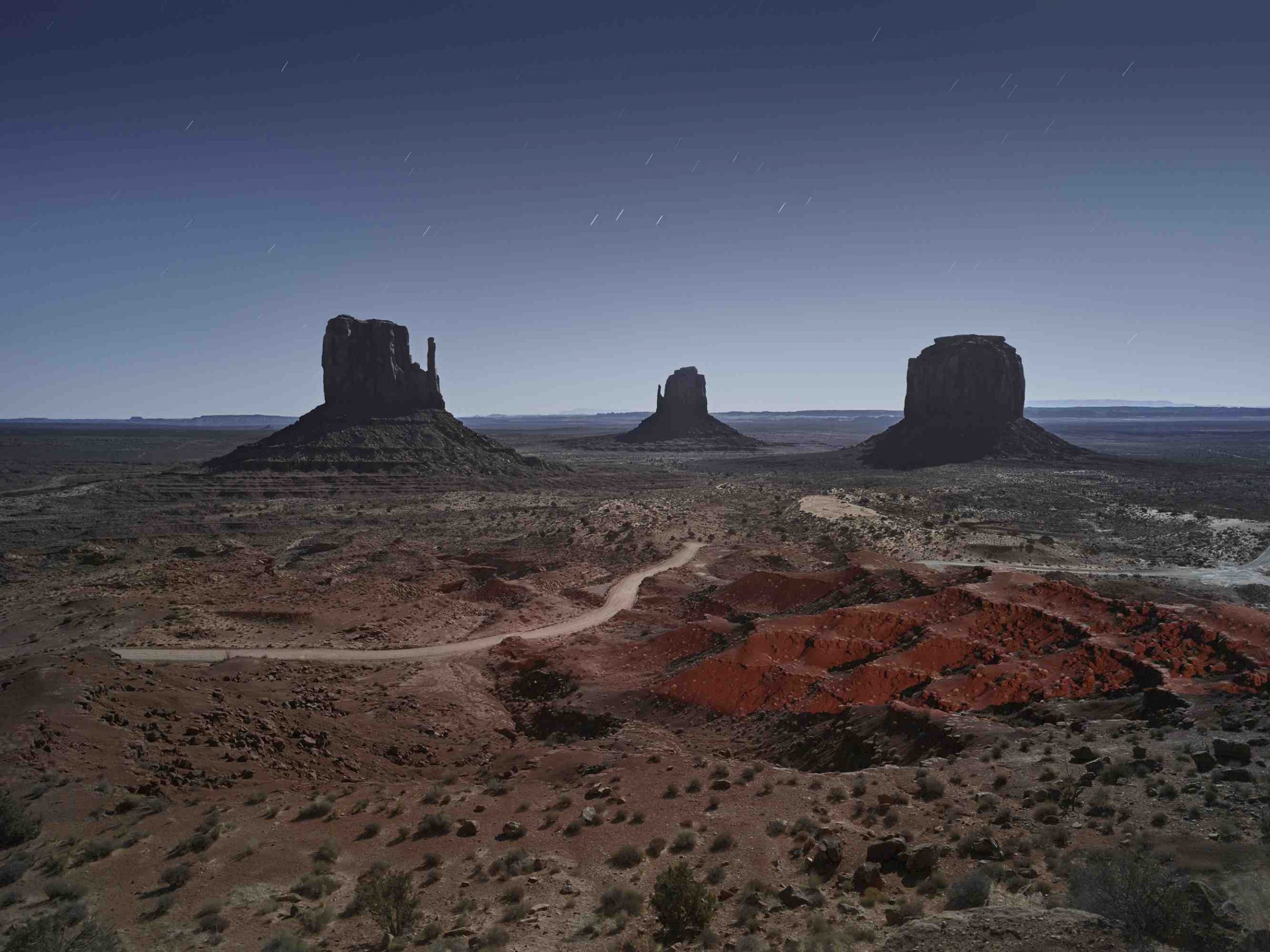The cinematic drama of a declining empire
- Text by Miss Rosen
- Photography by Luca Campigotto

Hailing from Venice, Luca Campigotto arrived in the United States for the very first time in 1981 at the tender age of 19. Dazzled by the country he had only known through photography and film, he felt a profound connection to a nation fueled by the mythic American Dream.
“The night I left, flying over New York, I said to myself: ‘One day I want to live here,’” he recalls. As fate would have it, in 2012, Campigotto moved to New York and immediately felt at home in a world he recognised from the work of photographers such as Weegee, Diane Arbus, and Joel Meyerowitz as well as filmmakers Martin Scorsese, Francis Ford Coppola, and Sidney Lumet.

The Navajo Trail, Route 160, near Durango, Colorado, 2018
“As a foreigner, living in the United States has always been like stepping into one of those films. At a certain point you want to become part of it,” Campigotto says. “New York has cultivated and spread its myth around the world just like my Venice did in late Middle Ages.”
Fuelled by a passion for travel photography, Campigotto set forth to photograph America’s wild landscapes, industrial areas, and cities at night. The images feel animated and alive, even though there are no people in the frame.
Describing his work as “the art of escape” into a world that he has imagined through books and period films, Campigotto crafts a cinematic tribute to an empire in decline in the new book American Elegy (Silvana).

Glendale, Utah, 2018

Butte, Montana, 2019
“A lot of what has nourished both my knowledge and my fantasies about this country seems to me no longer exists,” says Campigotto. “But my passion was not affected. Rightly or wrongly, mine is a sincere and faithful love. And as in a love story, sometimes it seems to matter more what we thought it could be than what it really was.”
Adopting a slow, immersive approach, Campigotto set off to see America by car, crafting a series of poignant, elegiac photographs accompanied by poetic reflections of his journey. “My Venetian streak is ironic, often even cynical, but American Elegy is a sentimental journey,” he says.

Soho, New York, 2009
As the book progresses, Campigotto finds splendor and majesty in tropes that have become cliché, transforming road trips, motels, gas stations, diners, abandoned cars, and faded signage into paeans of lost grandeur. “I always say that photography is the supreme tool of nostalgia. I try to use my camera like a time machine,” he says. “Taking photographs consoles us; it tells us that we love the world around us — that we are able to rescue something that was being lost.”
“Photographing industrial archeology, I want to underline the heroic figure of what is left, despite everything. Something that has come a long way and has resisted at all costs. There is something sublime in rust, in verdigris… like contemplating the passage of time in the sand of an hourglass.”

Monument Valley, Utah, 2018

Wendell, Idaho, 2019

Butte, Montana, 2019

Butte, Montana, 2019

Williamsburg, New York, 2012

Butte, Montana, 2019

Monument Valley, Utah, 2018
American Elegy is available now.
Enjoyed this article? Like Huck on Facebook or follow us on Twitter and Instagram.
Latest on Huck

In the ’60s and ’70s, Greenwich Village was the musical heart of New York
Talkin’ Greenwich Village — Author David Browne’s new book takes readers into the neighbourhood’s creative heyday, where a generation of artists and poets including Bob Dylan, Billie Holliday and Dave Van Ronk cut their teeth.
Written by: Cyna Mirzai

How Labour Activism changed the landscape of post-war USA
American Job — A new exhibition revisits over 70 years of working class solidarity and struggle, its radical legacy, and the central role of photography throughout.
Written by: Miss Rosen

Analogue Appreciation: Emma-Jean Thackray
Weirdo — In an ever more digital, online world, we ask our favourite artists about their most cherished pieces of physical culture. Today, multi-instrumentalist and Brownswood affiliate Emma-Jean Thackray.
Written by: Emma-Jean Thackray

Meet the shop cats of Hong Kong’s Sheung Wan district
Feline good — Traditionally adopted to keep away rats from expensive produce, the feline guardians have become part of the central neighbourhood’s fabric. Erica’s online series captures the local celebrities.
Written by: Isaac Muk

How trans rights activism and sex workers’ solidarity emerged in the ’70s and ’80s
Shoulder to Shoulder — In this extract from writer Jake Hall’s new book, which deep dives into the history of queer activism and coalition, they explore how anti-TERF and anti-SWERF campaigning developed from the same cloth.
Written by: Jake Hall

A behind the scenes look at the atomic wedgie community
Stretched out — Benjamin Fredrickson’s new project and photobook ‘Wedgies’ queers a time-old bullying act by exploring its erotic, extreme potential.
Written by: Isaac Muk